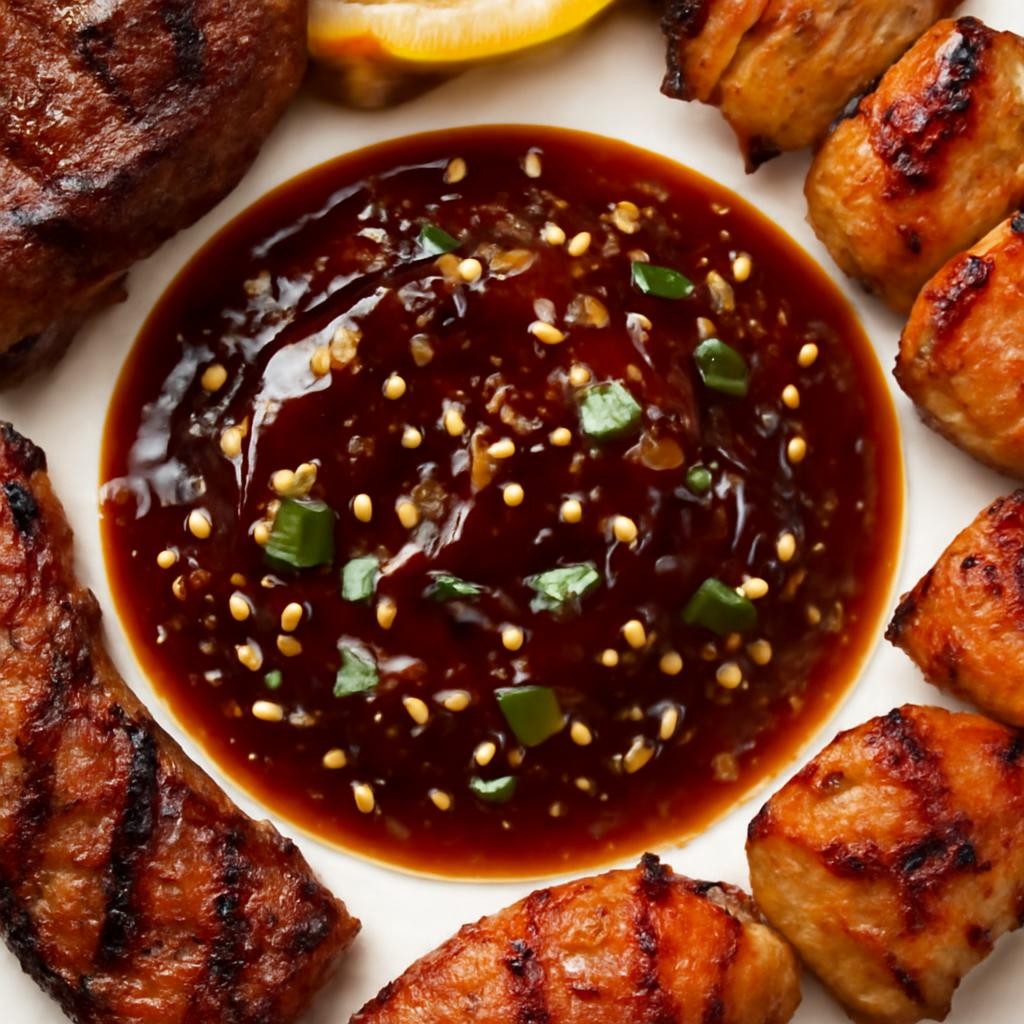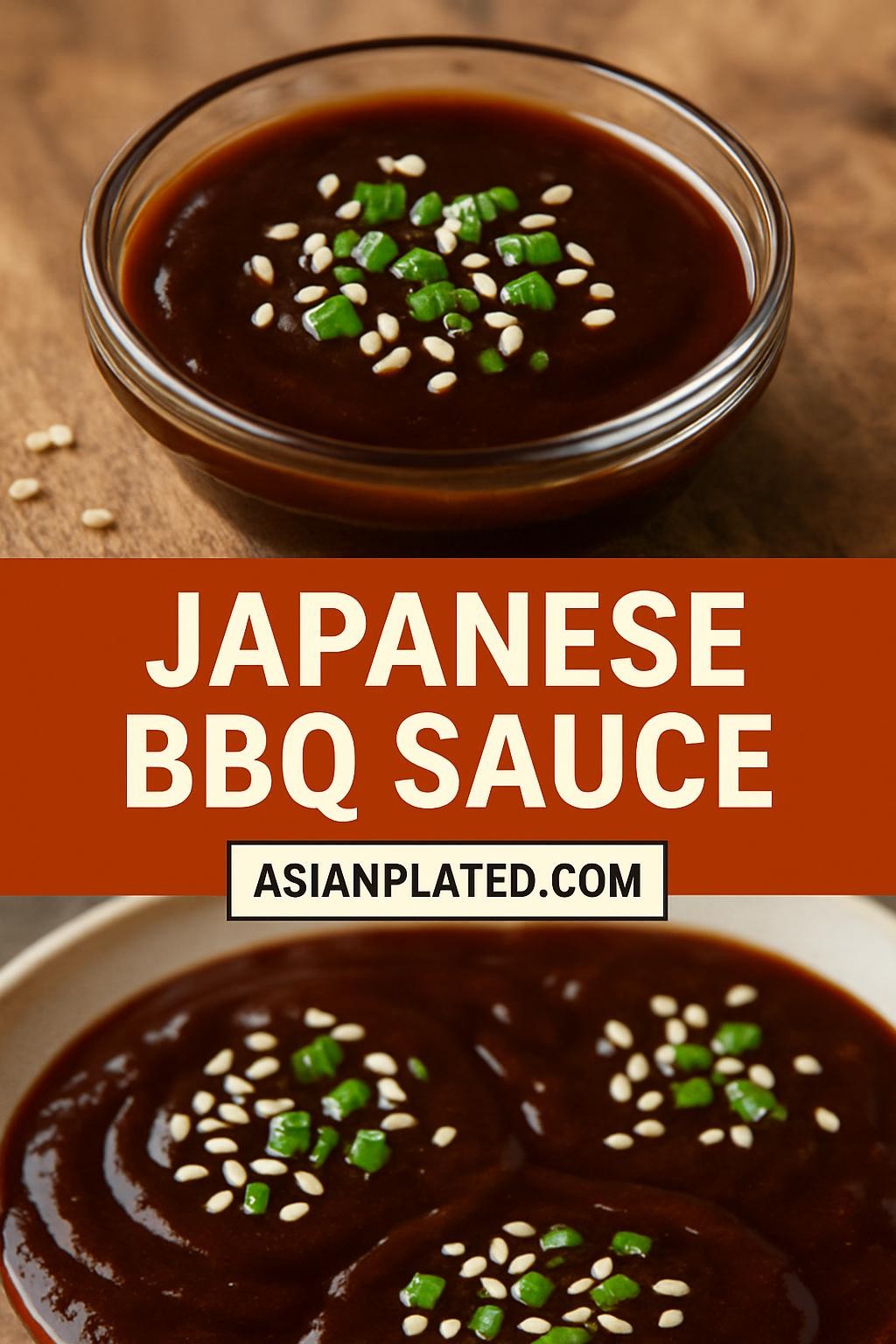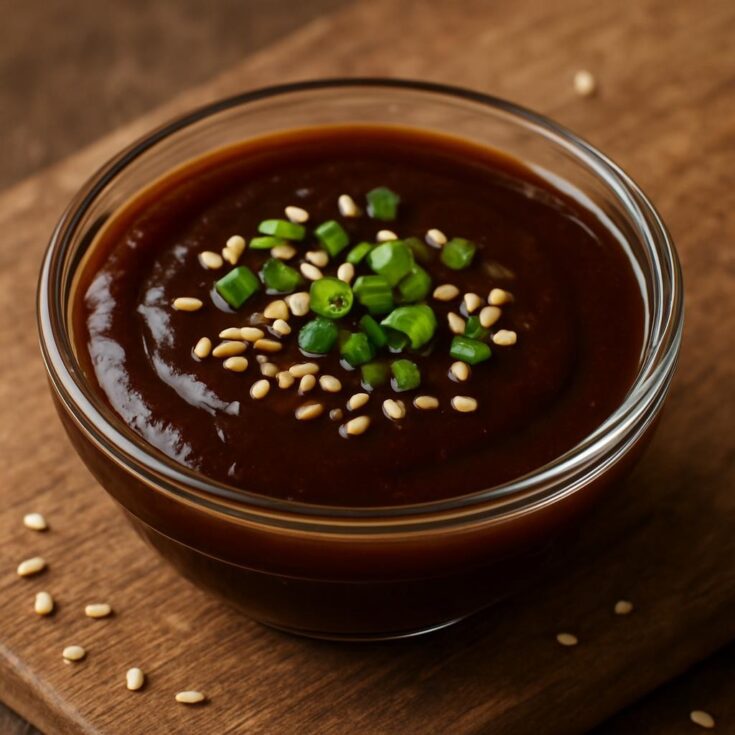Japanese BBQ Sauce, known as “yakiniku” sauce, is a savory and slightly sweet condiment that elevates any grilled dish to a new level. This versatile sauce is a harmonious blend of soy sauce, mirin, sesame oil, and spices that brings the bold flavors of Japanese cuisine right to your kitchen. Its appeal lies not only in its rich taste but also in its ability to enhance meats, vegetables, and even tofu, making it a go-to sauce for any home cook looking to add a touch of umami to their meals.

Why You Will Love This Recipe
You will fall in love with this Japanese BBQ Sauce because it embodies a perfect balance of flavors—salty, sweet, and a hint of tanginess that will awaken your taste buds. The recipe is incredibly easy to prepare, taking just a few minutes to whisk together the ingredients. This sauce fits well into various diets, including gluten-free options, as you can substitute soy sauce with tamari. Whether you are grilling, marinating, or dipping, this sauce will become a staple in your kitchen.
Tips and Tricks
To make your Japanese BBQ Sauce even more flavorful, consider toasting your sesame seeds before adding them to the mix for an extra nutty aroma. If you want to save time, you can prepare a larger batch and store it in the fridge for up to two weeks. For a spicy kick, try adding a dash of gochujang or sriracha. Remember to taste as you go; adjusting the sweetness and saltiness to your preference will result in a sauce that feels uniquely yours.
Make Ahead Tips
This Japanese BBQ Sauce can be made ahead of time, making it an ideal choice for meal prep. You can store it in an airtight container in the refrigerator for up to two weeks. If you want to make it even further in advance, consider freezing it in ice cube trays and transferring the cubes to a freezer bag for up to three months. This way, you can thaw only what you need!

Recipe Variations
Feel free to get creative with your Japanese BBQ Sauce. You can swap out the regular soy sauce for a low-sodium version or use coconut aminos for a soy-free alternative. For a fruitier twist, add pureed fruits like pear or mango, which will enhance the sweetness. If you’re in the mood for a smoky flavor, a few drops of liquid smoke can go a long way.
How to Serve
Serve your Japanese BBQ Sauce alongside grilled meats such as beef, chicken, or pork. It’s also fantastic with grilled vegetables like bell peppers, eggplant, and zucchini. For a complete meal, consider pairing it with steamed rice or noodles. Presentation can be enhanced with a sprinkle of sesame seeds and sliced green onions on top, giving your dish a beautiful pop of color.

Pairing Suggestions
For drink pairings, consider serving a chilled Japanese beer, such as Asahi or Sapporo, which complements the sauce beautifully. If you prefer something non-alcoholic, a refreshing iced green tea will do wonders. For sides, steamed edamame or a light cucumber salad with a sesame dressing harmonizes well with the rich flavors of the BBQ sauce. To finish off the meal on a sweet note, serve mochi or green tea ice cream for dessert.
How to Store
To store leftovers of your Japanese BBQ Sauce, place it in a clean, airtight container and refrigerate. It will keep well for up to two weeks. For longer storage, pour the sauce into ice cube trays and freeze. Once frozen, transfer the cubes to a freezer bag, and you can pull out a cube or two whenever you need a quick flavor boost. To reheat, simply thaw in the fridge overnight or warm in a saucepan over low heat.
Equipment Needed
You’ll need a mixing bowl and a whisk to combine your ingredients, along with measuring cups and spoons for accuracy. A small saucepan can be used if you decide to heat the sauce slightly to meld the flavors. No special equipment is necessary, but a glass jar or bottle for storage is recommended.

Dietary Adaptations
To make this Japanese BBQ Sauce vegan, simply ensure that your mirin is alcohol-free and use a vegan-friendly soy sauce. For a gluten-free version, substitute with tamari. If you need it to be nut-free, ensure that the sesame oil is omitted, and you can replace it with a neutral oil like canola or sunflower oil.
Seasonal Adaptations
In the spring and summer, take advantage of fresh ingredients by adding seasonal fruits like peaches or apricots for a fresh twist. In the fall, consider incorporating a bit of pumpkin puree for a unique flavor. During winter months, try using spices like cinnamon or allspice to add warmth to your sauce.
Recipe FAQs
Can I substitute the soy sauce?
Yes! You can use tamari for gluten-free or coconut aminos for a soy-free option.
How long does it take to make?
This sauce can be prepared in about 10 minutes, making it perfect for quick meals.
Can I use this sauce as a marinade?
Absolutely! This sauce works great as a marinade for meats and vegetables. Just let them marinate for at least 30 minutes to soak in all the flavors.
What if I don’t have mirin?
You can substitute mirin with a mixture of white wine and a little sugar, or use rice vinegar with a bit of sugar to mimic the sweetness.
Japanese BBQ Sauce

Japanese BBQ Sauce, known as “yakiniku” sauce, is a savory and slightly sweet condiment that elevates any grilled dish to a new level.
Ingredients
- 1/2 cup soy sauce (or tamari for gluten-free)
- 1/4 cup mirin
- 2 tablespoons brown sugar
- 1 tablespoon sesame oil
- 1 tablespoon rice vinegar
- 1 tablespoon grated ginger
- 1 garlic clove, minced
- 1 teaspoon sesame seeds
- 1/2 teaspoon black pepper
Instructions
- In a mixing bowl, combine the soy sauce, mirin, and brown sugar. Whisk until the sugar is dissolved.
- Add the sesame oil, rice vinegar, grated ginger, minced garlic, sesame seeds, and black pepper to the bowl.
- Whisk all the ingredients together until well combined.
- Taste the sauce and adjust the seasoning as desired, adding more sugar for sweetness or more soy sauce for saltiness.
- For a deeper flavor, let the sauce sit for at least 30 minutes before using.
- Store in an airtight container in the refrigerator until ready to use.
Nutrition Information:
Yield: 1 Serving Size: 1Amount Per Serving: Calories: 446Total Fat: 16gSaturated Fat: 2gTrans Fat: 0gUnsaturated Fat: 13gCholesterol: 0mgSodium: 7013mgCarbohydrates: 59gFiber: 2gSugar: 48gProtein: 11g
Asianplated.com, occasionally offers nutritional information for recipes contained on this site. This information is provided as a courtesy and is an estimate only. This information comes from online calculators. Although allchickenrecipes.com attempts to provide accurate nutritional information, these figures are only estimates.
Final Thoughts
Creating your own Japanese BBQ Sauce is a rewarding experience that brings the authentic taste of Japan right to your home. With its easy preparation and customizable flavors, this sauce is perfect for enhancing any dish. Whether you use it for grilling, marinating, or simply as a dipping sauce, you’ll find that it becomes a beloved staple in your kitchen. Embrace the flavors, get creative, and enjoy the deliciousness that is Japanese BBQ Sauce!
